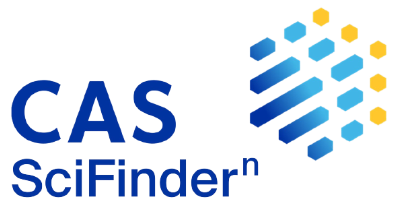The presentation of regioselectivity of 1-ethyl-3-[4-(6,7,8,9-tetrahydro-5H-[1,2,4]triazolo[4,3-а]azepin-3-yl)phenyl]thiourea cyclization with α-bromoketone
DOI:
https://doi.org/10.24959/ophcj.17.916Keywords:
5H-[1, 2, 4]triazolo[4, 3-а]azepines, cyclization, quantum chemical calculations, continuum, activation energy, relative energy, B3LYP/6-31 G(d) and M06-2X/6-31 G(d) GAUSSIAN W09 program methods, thermodynamics parameters, saddle pointAbstract
An important step in creation of potential drugs is to confirm the structure of the compounds synthesized. This requires the use of modern physical and physico-chemical methods of research. Nowadays a promising scientific direction for searching biologically active substances is the study of 2-R-imino-1,3-thiazoline derivatives.
Aim. To study regioselectivity of the cyclization reaction of 1-ethyl-3-[4-(6,7,8,9-tetrahydro-5Н-[1,2,4]triazolo[4,3-а]azepin-3-yl)phenyl]thiourea with 2-bromo-1-phenylethanone.
Results. The true structure of the interaction product was determined by the methods of 1H NMR spectroscopy and X-ray analysis. Quantum chemical calculations of the electronic structure, geometry and thermodynamic parameters of the initial thiourea three tautomers were given. Activating energy of tautomer 1A belower than 1B one, the state of 1B has modest lower relative energy, consequently tautomer 1A is more credible state. Thus, the conclusion can be made that the reaction will proceed by 1-1A-3A.
Experimental part. Quantum chemical calculations of the electronic structure, geometry and thermodynamic parameters of the initial thiourea three tautomers were determined by the density functional theory (DFT) methods using the GAUSSIAN W09 computer program. The effect of the solvent was considered within the framework of polarized continuum model (PCM).
Conclusions. Based on the physico-chemical studies and quantum chemical calculations of the reaction cyclization direction the conclusion has been made that the cyclization reaction of 1-ethyl-3-[4-(6,7,8,9-tetrahydro-5H-[1,2,4]triazolo[4,3-а]azepin-3-yl)phenyl]thiourea 1 with 2-bromo-1-phenylethanone 2 is regioselective, and it leads to formation of more thermodynamically advantageous (stable) isomer 3A.
Downloads
References
- Synthesis and antimicrobial activity of some novel 2–(substitutedfluorobenzoylimino)–3–(substitutedfluorophenyl)–4–methyl–1,3–thiazolines / A. Saeed, U. Shaheen, A. Hameed et al. // J. of Fluorine Chem. – 2010. – Vol. 131, Issue 3. – Р. 333–339. doi : 10.1016/j.jfluchem.2009.11.005.
- Synthesis of acridinyl–thiazolino derivatives and their evaluation for anti–inflammatory, analgesic and kinase inhibition activities / S. M. Sondhi,N. Singh, A. M. Lahoti et al. // Bioorg. & Med. Chem. – 2005. – Vol. 13, Issue 13. – P. 4291–4299. doi : 10.1016/j.bmc.2005.04.017.
- Antiinflammatory, Analgesic and Kinase inhibition activities of some Acridine derivatives / S. M. Sondhi, G. Bhattacharjee, R. K. Jameel et al. // Central Eur. J. of Chem. – 2004. – Vol. 2, Issue 1. – P. 1–15. doi : 10.2478/bf02476181.
- Synthesis of 2–Acyloxycyclohexylsulfonamides and Evaluation on Their Fungicidal Activity / X. Li, Z. Cui, X. Chen et al. // Int. J. Mol. Sci. – 2013. – Vol. 14, Issue 11. – P. 22544–22557. doi : 10.3390/ijms141122544.
- Синтез, противокоррозионная и биоцидная активность производных триазолоазепина / А. М. Демченко, К. Г. Назаренко, А. П. Макей и др. // Журн. прикладной химии. – 2004. – № 77 (5). – С. 794–797.
- Synthesis of 2–(4–aryl(adamantyl)–2–phenylіmіnothіazol–3–yl)–ethanol derivatives and prediction of their biological activity / H. O. Yeromina, I. V. Drapak, L. O. Perekhoda et al. // Der Pharma Chemica. – 2016. – Vol. 8, Issue 3. – P. 64–70.
- Синтез похідних N–[4–метил(41–хлорофеніл)–2–R–фенілімінотіазол–3–іл]–морфоліну за реакцією Ганча / Л. О. Перехода, Г. О. Єрьоміна, І. В. Драпак та ін. // Журн. орг. та фармац. хімії. – 2016. – Т. 14, № 3 (55). – P. 52–57.
- The anti–allergic and antihistaminic properties of hydrobromide 2–[4–(41–chlorophenyl)–2–phenyliminothiazol–3–yl]–ethanol / O. Yu. Koshova, H. O. Yeromina, L. O. Perekhoda, Z. G. Yeromina // News of Pharmacy. – 2016. – Vol. 4, Issue 88. – P. 66–69.
- The antioxidant properties of 1–[2–(R–phenylimino)–4–methyl–3–(3–[morpholine–4–yl]propyl)–2,3–dihydro–1,3–thiazol–5–yl]ethane–1–one derivatives under conditions of artificial oxidative stress in vitro / L. Perekhoda, H. Yeromina, I. Drapak et al. // SJMPS. – 2017. – Vol. 3, Issue 1. – P. 55–59.
- Синтез та властивості похідних 3–(41–амінофеніл)–6,7,8,9–тетрагідро–5Н–[1,2,4]триазоло[4,3–a]азепінів / С. А. Демченко, Г. О. Єрьоміна, Л. О. Перехода, А. М. Демченко // Матер. XXIV Укр. конф. з орг. хімії (Полтава, 19–23 вересня 2016 р.). – Полтава, 2016. – С. 217.
- Пат. на корисну модель № 111015 Україна, МПК C 07 B 43/00 A 61 K 31/427 A 61 P 29/00. Гідробромід (3–етил–4–феніл–3Н–тіазол–2–іліден)–[4–(6,7,8,9–тетрагідро–5Н–[1,2,4]триазоло[4,3–а]азепін–3–їл)феніл]аміну, що проявляє анальгезуючу активність / С. А. Демченко, Г. О. Єрьоміна, Л. О. Перехода та ін.; заявник і патентовласник Національний фармацевтичний університет. – № u201604704; заявл. 26.04.2016; опубл. 25.10.2016, Бюл. № 20.
- Gaussian 09, Revision A.02 / M. J. Frisch, G. W. Trucks, H. B. Schlegel, G. E. Scuseria, M. A. Robb, J. R. Cheeseman, G. Scalmani, V. Barone, G. A. Petersson, H. Nakatsuji, X. Li, M. Caricato, A. Marenich, J. Bloino, B. G. Janesko, R. Gomperts, B. Mennucci, H. P. Hratchian, J. V. Ortiz, A. F. Izmaylov, J. L. Sonnenberg, D. Williams–Young, F. Ding, F. Lipparini, F. Egidi, J. Goings, B. Peng, A. Petrone, T. Henderson, D. Ranasinghe, V. G. Zakrzewski, J. Gao, N. Rega, G. Zheng, W. Liang, M. Hada, M. Ehara, K. Toyota, R. Fukuda, J. Hasegawa, M. Ishida, T. Nakajima, Y. Honda, O. Kitao, H. Nakai, T. Vreven, K. Throssell, J. A. Montgomery, Jr., J. E. Peralta, F. Ogliaro, M. Bearpark, J. J. Heyd, E. Brothers, K. N. Kudin, V. N. Staroverov, T. Keith, R. Kobayashi, J. Normand, K. Raghavachari, A. Rendell, J. C. Burant, S. S. Iyengar, J. Tomasi, M. Cossi, J. M. Millam, M. Klene, C. Adamo, R. Cammi, J. W. Ochterski, R. L. Martin, K. Morokuma, O. Farkas, J. B. Foresman, and D. J. Fox. – Gaussian, Inc., Wallingford CT, 2016.
- Tomasi, J. Quantum mechanical continuum solvation models / J. Tomasi, B. Mennucci, R. Cammi // Chem. Rev. – 2005. – Vol. 105, Issue 8. – P. 2999–3094. doi : 10.1021/cr9904009.
- Zhao, Y. The M06 suite of density functionals for main group thermochemistry, thermochemical kinetics, noncovalent interactions, excited states, and transition elements: two new functionals and systematic testing of four M06–class functionals and 12 other functionals / Y. Zhao, D. G. Truhlar // Theor. Chem. Account. – 2007. – Vol. 120, Issue 1–3. – P. 215–241. doi : 10.1007/s00214–007–0310–x.
Downloads
Published
How to Cite
Issue
Section
License
Copyright (c) 2017 National University of Pharmacy

This work is licensed under a Creative Commons Attribution 4.0 International License.
Authors publishing their works in the Journal of Organic and Pharmaceutical Chemistry agree with the following terms:
1. Authors retain copyright and grant the journal the right of the first publication of the work under Creative Commons Attribution License allowing everyone to distribute and re-use the published material if proper citation of the original publication is given.
2. Authors are able to enter into separate, additional contractual arrangements for the non-exclusive distribution of the journal’s published version of the work (e.g., post it to an institutional repository or publish it in a book) providing proper citation of the original publication.
3. Authors are permitted and encouraged to post their work online (e.g. in institutional repositories or on authors’ personal websites) prior to and during the submission process, as it can lead to productive exchanges, as well as earlier and greater citation of published work (see The Effect of Open Access).














